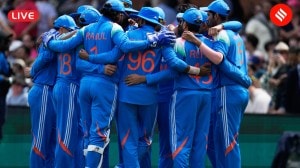India supplied radar for the targeted airbase but New Delhi cautious, prefers not to comment
As the LTTE confirmed fears of it having acquired air capability by using light aircraft to bomb the Katunayake air force camp near Colombo, there was silence in New Delhi.

As the LTTE confirmed fears of it having acquired air capability by using light aircraft to bomb the Katunayake air force camp near Colombo today, there was silence in New Delhi. This despite the fact that it was India which had supplied the radar system deployed at the base as part of its assistance to help Colombo strengthen its air defence.
It’s learnt that two Indira radars were given to Sri Lanka about six months ago following Colombo’s repeated requests for help in the light of reports that the Tigers had assembled two light aircraft and were modifying it to carry explosives. But this morning when LTTE aircraft flew in, sources said, the radar was apparently shut for maintenance.
Officials here admit that the strike — perhaps the first ever by a non-state actor — is of “serious concern.” But New Delhi’s silence is being attributed not only to “political pressure” from its Tamil allies but also increasing frustration over the Mahinda Rajapakse government’s inclination to pursue a military campaign rather than a political one.
Still, India has tried to remain positive on the issue of defence cooperation, especially after reports that Colombo has been knocking Islamabad’s doors for help. While a formal defence cooperation agreement with Sri Lanka is pending, there is an understanding between both sides to continue “meaningful engagement” on defence assistance by keeping it out of the public eye. The air defence assistance — including the radars — is one such example.
India has opened doors of assistance by also training senior Sri Lankan military personnel at the its Air Defence college here, sources said, specifics of the nature of cooperation have been kept under wraps given “internal political pressures.”
DMK, a major UPA constituent, has frequently voiced concern over the plight of Tamils in Sri Lanka and shown signs of discomfort each time India has tried to assist the the Rajapakse government in Colombo. Just recently, Vaiko’s MDMK — a major sympathiser of Tamil separatists in Sri Lanka — withdrew support from the UPA government.
In this context, India has been trying to pursue Sri Lanka to followed a measured approach centred around political dialogue. However, sources said, the clearing up of camps and consolidation of Sri Lankan Armed Forces around Batticaloa in the east and the recent build-up in northeastern Vavuniya has not gone down well with New Delhi.
India, which has maintained that Sri Lanka’s territorial integrity must not be compromised, is more in favour of a devolution model acceptable to all political parties including Tamil parties. The idea, sources said, was to encourage unity among all political parties on a possible devolution package so that sufficent pressure can be brought upon LTTE to cooperate at the negotiating table.
But recent developments have not gone by this script. Rather, they have gone the other way with Lankan forces stepping up the military offensive. While all this has frustrated Indian diplomatic efforts, the armed conflict has had its resonance in Tamil Nadu where refugees continue to land in large numbers. This, in turn, has its impact in New Delhi and on the UPA government which cannot overlook DMK concerns.
National Security Advisor M K Narayanan and Foreign Secretary Shiv Shankar Menon regularly brief Tamil Nadu Chief Minister M Karunanidhi on developments in the island nation, indicating the kind of efforts the Centre has to make to assure the state’s political leadership that it is not working against the interests of the Tamil population in Sri Lanka.
These issues will come up for discussion when Lankan Foreign Minister Rohitha Bogollagama arrives on March 30 to be soon followed by Rajapakse himself, for the SAARC summit on April 3.



- 01
- 02
- 03
- 04
- 05


























